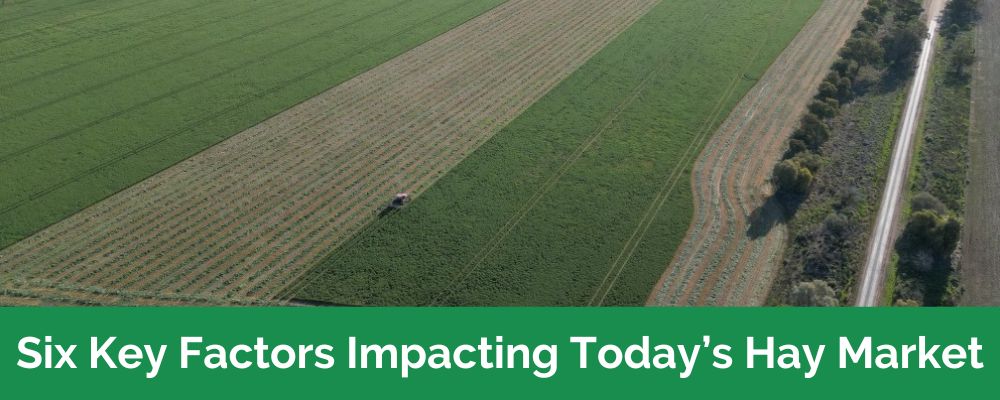
Our Director Tim Ford recently presented at the NSW DPI Dairy Breakfast.
Tim’s presentation provided valuable information on the current state of the Australian hay market, touching on various factors influencing it, and today we’d like to share those with you. Below, we’ve highlighted some of the essential takeaways. For those interested in a more in-depth explanation, we’ve also included a link to the full video of the presentation at the bottom of this page.
1. Rainfall or the lack of it tells a story.
Despite the strong drought impact in certain areas and increased demand for commodities, the current situation is nowhere near the panic of late 2019 and early 2020.
2. El Niño causing FOMO.
The current market trends are being impacted by anticipation and media reports surrounding the El Niño weather phenomenon, causing heightened market concerns and fear of missing out.
3. Export, China and the drop in the Australian dollar.
China has reopened its export licenses for Australian hay export facilities, influencing the hay market considerably. Some exporters have reported record sales for September, driven by the low Australian dollar, influencing sales across all markets.
4. Fuel price and ongoing pressure on freight.
There’s a sustained rise in freight costs due to factors such as the low Australian dollar driving a higher fuel price, impacting the transportation of commodities.
5. 2022 wet season carry over inventory.
Weather damage from 2022 has resulted in large volumes of low-quality products still in the market, influencing current market dynamics.
6. Livestock backlog.
A backlog of livestock in the system is impacting feed demand due to the anticipation of rising livestock prices and processing constraints.
Tim’s recommendations for this hay season include:
- Slow down and don’t get caught up in the panic. There will be summer production, so look for quality.
- Research is free online, or 20 cents for a phone call; check our website and find out what’s happening in the industry.
- Build relationships with selected suppliers to improve your knowledge and resource network.
- Collaborate with your nutritionist to make informed purchasing decisions.
You can view the full presentation below:


